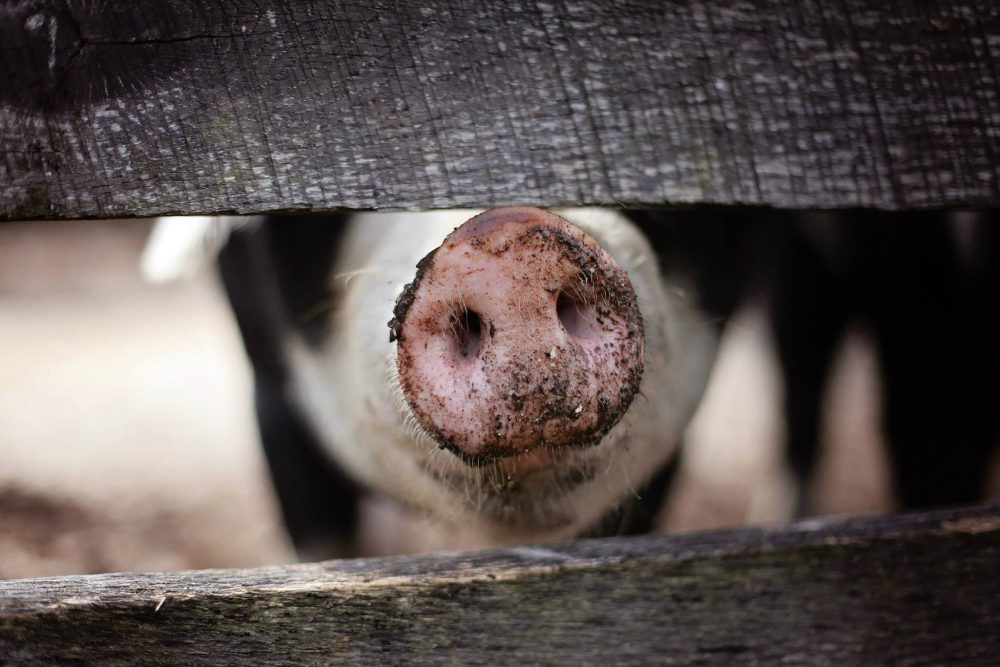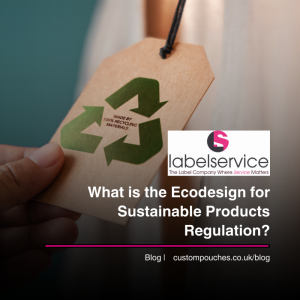A study was conducted at Cambridge University on identifying ways of producing pigs more sustainably, with an emphasis on trade-offs and co-benefits in land and antimicrobial use. The following are the highlights of that study.
The swine industry is set to provide high-quality protein to feed the world’s increasing population. To meet this goal, the swine industry needs to enhance production without increasing land use, and it is necessary to look out for the swine shed environment to create more sustainable pork products. In addition, special attention needs to be paid to parameters such as temperature, humidity, carbon dioxide, and ammonia concentration which are crucial for swine health and welfare.
Sustainability is defined as increasing production efficiency, decreasing negative impacts, withstanding the prosperous pork production, and continuing improvement on farm. As the world population grows, total pork yield needs to increase, pork quality is required to improve, and pork safety needs to be guaranteed to have an environmentally friendly swine industry. In addition, health care and biosecurity protocols must be in place and all excretions, disposals, noise, and odours must be treated to reach the environmental disposal standards.
Challenges of sustainability
Studies showed that swine feed production has significant environmental impacts on pork production systems, because of greenhouse gas emissions and non-renewable energy and resource usage. Moreover, administration of antibiotics in swine feed as a growth promoter has raised serious concerns, because antibiotics in animal feed will enter the food chain and directly affect the environment. Furthermore, waste products from commercial pig farms have a negative environmental impact due to the high levels of phosphorus and nitrogen present in the manure. More challenges such as unstable pork price, infectious diseases, and sow reproductive diseases represent major threats to the development of sustainable pork production, as well.
Developing sustainable and environmentally friendly pork production systems is the preferred organisation form in the future. Strategies such as effective manure recycling, forage feeding, alternative proteins and food by-product usage, antibiotic therapy, prophylaxis, and immunisation programs and precision feeding are all important topics and research areas. Furthermore, the government should strengthen the guidelines and training of pig producers, and further market intervention may be needed to stabilize pork production and reduce pork price fluctuations.
Externalities
Externalities are the positive or negative impacts of a system that not only affect those directly involved (e.g. the farmer). Livestock farming generates some striking externalities; whilst livestock production provides 30% of human dietary protein, it occupies 75% of agricultural land, emits 14–17% of anthropogenic greenhouse gas emissions, and uses more antimicrobials than the whole of human medicine. Demand for livestock products is high and rising, especially for pork which has increased fourfold in the past 50 years.
How we meet this rising demand will be pivotal for health and the environment. Livestock farming systems vary considerably in the scale of their externalities but our understanding of how multiple externalities co-vary across contrasting production systems is limited. Research typically focuses on impacts in isolation, and the synergies or trade-offs among them are extrapolated or assumed. To identify and promote the types of systems that best limit impacts or even carry co-benefits one needs to explicitly consider multiple externalities and evaluate them across a wide range of alternative production systems.
Two important externality costs of livestock production are land use and antimicrobial resistance (AMR). Field studies of population densities of > 2500 individually-sampled species of vertebrates, plants and insects across five continents have consistently found that farming would have least impact on biodiversity if demand was met by coupling high-yield production systems with sparing remaining land for nature. Whilst low-yielding systems may harbour more biodiversity on farm they, by definition, need more land to produce a set amount of food, and the additional on-farm biodiversity in low-yield systems is not enough to counter the biodiversity loss from greater land use—farming land that could otherwise be spared for nature. We therefore use land-use cost as a proxy for negative impact on biodiversity, with low land-use costs (high yields) representing lower impacts on biodiversity compared with a natural habitat baseline.
There is also substantial evidence that land use co-varies with overall greenhouse gas emissions of contrasting production systems, so systems with low land use also often have smaller greenhouse gas footprints. However, high-yield (i.e. low land-use) livestock farming raises important concerns. It is perceived to impose other negative costs including increased AMU which drives AMR.
There is some agreement that agricultural intensification is linked to increased yields (production per unit area). It is therefore often stated that AMU and land-use costs trade off, so that interventions for mitigating AMU will probably exacerbate the damaging impacts of land use, and vice versa. However, data on yields (and hence land use) of livestock systems are patchy, as is information on AMU—and measures of both across a common set of production methods are very limited.
Strategies for sustainability
The following strategies can be applied on farm to support a sustainable swine industry:
- Filter manure effectively to safely reincorporate it into the soil. This is an inexpensive and sustainable means to reuse pig waste to produce livestock feed.
- Improve pigs’ gut health by feeding the herds forage legumes such as lucerne, rather than commercial livestock feed to encourage foraging behaviour.
- Use alternative protein sources including sunflower seed meal, rapeseed meal, peas, and fava beans to decrease negative environmental impact of soybean farming.
- Exploit food by-products to provide adequate nutrition and limit the use of grain crops that are environmentally damaging.
- Consider approaches including antibiotic therapy, prophylaxis, and immunisation programs to control sow reproductive diseases such as Porcine Reproductive and Respiratory Syndrome, which can damage the productive performance of sows and cause great economic losses.
- Apply precision nutrition to evaluate the available nutrient value of feed ingredients accurately and to determine the nutrient requirements at different stages of growth under different environmental conditions precisely.
The study focussed their analyses on pig systems as there is a pressing need to identify and promote systems that combine low externality costs. Demand for pork is increasingly rapidly8, pigs are the highest livestock users of antimicrobials globally and pork production uses ~ 120 million hectares of land including ~ 8.5% of global arable land. To compare externality costs across alternative production systems, the study estimated externalities as the sum of costs associated with the production of a unit of output. They collected data from 74 UK breed-to-finish pig systems (which are responsible for 5–60% of the UK pig sector by label type) and calculated their land-use and AMU costs. Land-use cost metrics are well established and reported in m2/kg deadweight (DW), including land used to rear animals and to produce feed. AMU cost metrics, however, are often reported using different, by necessity imperfect, proxies for AMR risk.
Results
All results are based on data collected from 74 commercial breed-to-finish systems with a range of food label types.
Land-use costs varied both within and between labelling categories and ranged from 3 to 36m2/kgDW and had significantly different medians. Post-hoc Dunn’s analyses revealed that Organic systems had significantly greater land-use costs than RSPCA-assured, Red Tractor and “none”. These land-use costs were estimated using economic allocation and FeedPrint38 country-specific yields, but system rankings were relatively insensitive to alternative allocation methods and sources of feed ingredient yields. There were also significant differences in land-use costs by both breeding and finishing husbandry types, and post-hoc Dunn’s analyses found that outdoor-bred systems had significantly higher land-use costs than indoor-bred, and outdoor-finished than slatted and straw yard.
They did not find strong evidence of negative correlations between either total or category B AMU costs and land-use costs. No label types performed poorly in both aspects but many performed poorly in one. The best performing 50% of farms for both costs still included systems from several label or husbandry types. The 11 breed-to-finish systems in the lowest 50% of breed-to-finish systems for land-use and both AMU costs comprised eight Red Tractor systems (out of 61 in their sample), including three that were also RSPCA assured (out of 31), in addition to two (of four) “none” and one (of three) woodland systems, which was also free range (of 26); none of the six Organic systems fell in this best-performing set of farms. The high performance of this woodland system is dependent on this assumption; when land under tree cover is not excluded this system is no longer in the lowest 50% of systems for land-use cost. When classified by husbandry type, five of these 11 most promising systems were indoor-bred (out of 32 studied), four were outdoor-bred (out of 42 studied), and two (of two studied) were hybrid indoor-outdoor bred. Of these same 11, but by finishing system husbandry type, five were finished with slatted floors, five in straw yards and one was outdoor finished (out of 30, 16 and 26 studied, respectively). No label type was reliably associated with high performance in both domains.
The aims of this study were to collect empirical data from real-world farming systems and use them to characterise the association between land-use and AMU costs. They also aimed to identify systems that carried low costs in both domains, if they existed.

















